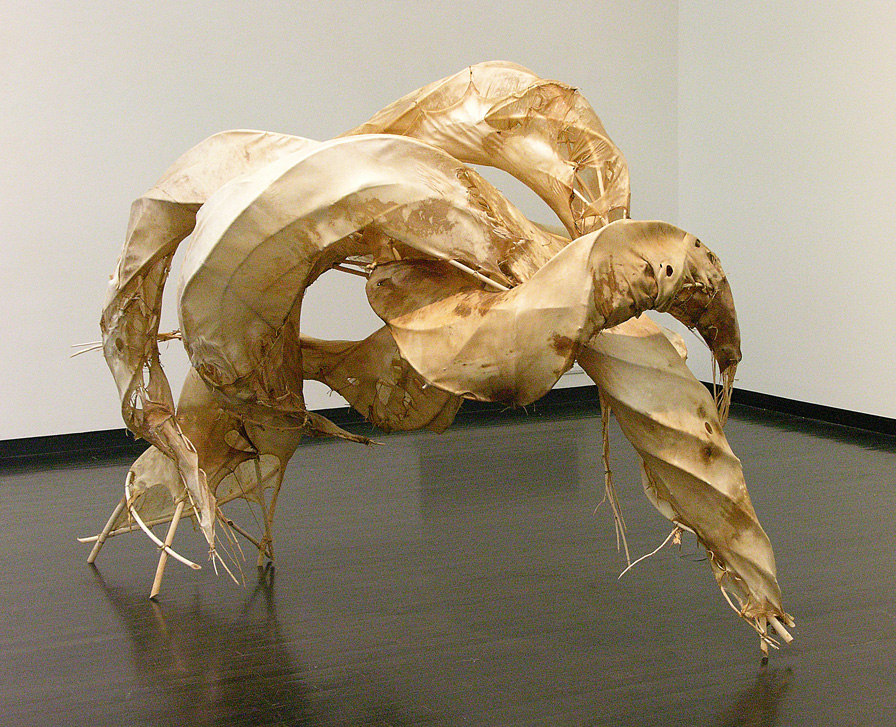July 7 – July 12, 2021
The landscape of South Dakota, remote, yet beautiful, has left its mark on Carol Hepper, a native of the state. It has elicited from her an extraordinarily poetic response in the form of a body of work that unites respect for the past and with a new means of expression.
Hepper’s sculptures from the early 1980s are three-dimensional structures made from objects that she has found at or near the family’s ranch on the Indian reservation in McLaughlin, South Dakota where she lived and worked [on the Standing Rock Reservation just across the North Dakota border]. In her work she has incorporated bones, driftwood, and animal hides without attempting to disguise their origin, alter their nature, or aggrandize their inherent beauty as artifacts of a dying time. The animal bones, the hides she has tanned herself, the wood, the driftwood, retain a sense of their history. The tooth marks of the coyote and other scars on the animal skins, the weathering of bone and driftwood remind us of the previous existence of these things; but the sculptures are not meant to represent literally the folklore of the past they honor. Hepper is able to draw upon nature and upon earlier cultures to make a statement that is both timeless and contemporary.
Carol Hepper, Moondance, 1983.
Deer skin and willow limbs.

Carol Hepper, Seven Stroke Roll, 1984.
Deer skin and willow limbs.